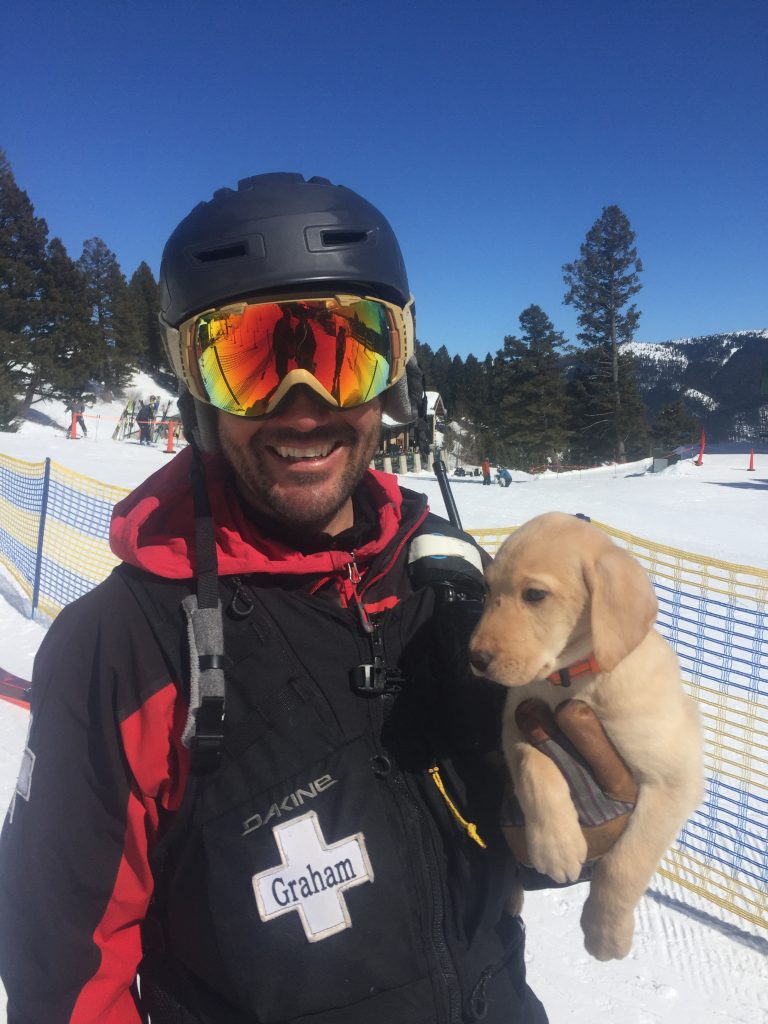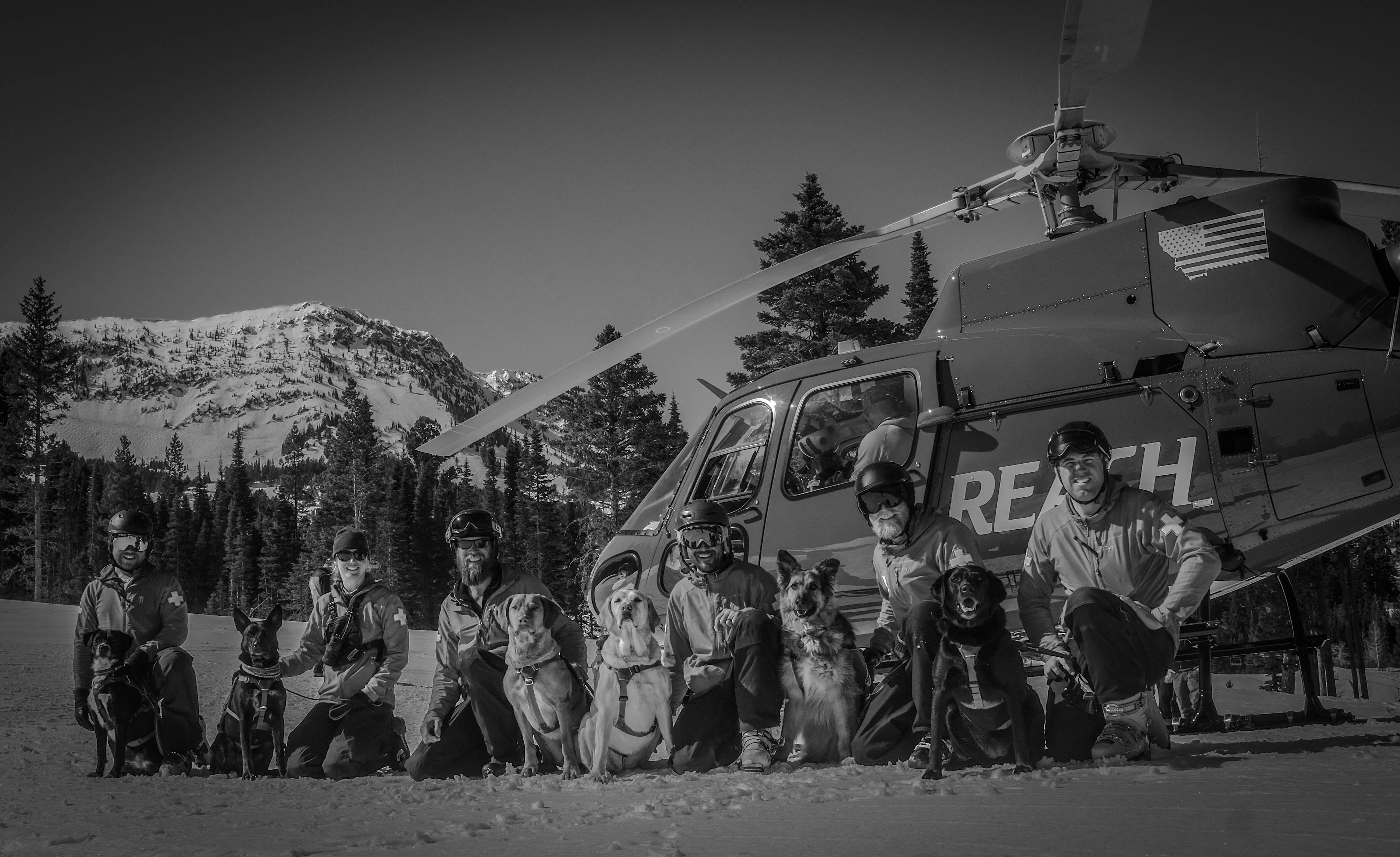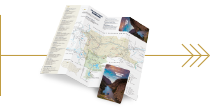Bridger Bowl Avalanche Dogs; Everyone’s Favorite Heroes
Yellowstone Country’s mountains are steep, rugged, and fill with an average of 350” of light, dry snow each winter. It’s what draws snowboarders and skiers of all abilities to the area, and it’s what keeps us coming back for more. Our ski areas also have some extraordinarily steep terrain, known for some of the best in-bounds extreme skiing in the nation. With that, comes the risk of avalanches. While our ski patrol does an exceptional job of mitigating the danger, avalanche rescue dogs are an essential part of the team.
We sat with Graham Turnage, Bridger Bowl Ski Patrol, and Avalanche Dog Handler to learn more about the work these animals do, and what it takes to train them. Turnage has been an avalanche dog trainer and handler for 17 years, currently training his 3rd dog, Otis.

YC: Walk us through a day in your life on the mountain.
GT: Our days start early, weather dependent. On a typical day, I get to the ski area around 6:15 a.m., and the dogs get a chance to romp around while we’re getting ready. Generally, our boots are on, and we’re out of the locker room door at 7:00 a.m.
If snowing or blowing, we’re doing hazard mitigation work, mostly on the upper mountain. The dogs stay in the kennel down below for the first couple of hours. Most are retrievers, so throwing explosives around them would be problematic. When the lifts open, we try to have the dogs staged high on the mountain, at least one on the north side and one on the south. If it’s a hectic morning, someone will bring the dogs up by snowmobile.
YC: Do they stay put all day?
GT: Yes, generally, they will sit patiently during the day. Most have either a dog kennel or a bench or dog bed on the floor; it varies by structure. If the facilities are small, dog handlers required to keep them corralled; they are expected just to co-exist. Thankfully, knock on wood, we have been fortunate, we’ve been able to mitigate the avalanche chance and have not had to find anyone buried in-bounds. We train the dogs as an insurance policy, but hopefully, we will not have to use it.
YC: How do you train an avalanche rescue dog?
GT: We start with intense obedience training when they are puppies. We put them on a leash or short rope and teach them “Sit, Stay, Heel”—all the same stuff you would teach a pet, but they are held to a higher standard. There is a series of obedience tests they need to pass, one clears them to be at the ski area, then on the runs and lifts. The whole first season, 8 months to one year, is getting them used to the ski area, socializing them.
From there, we introduce simple problems. For example, we will hide their favorite toy and command, “search.” Once they have that, we’ll dig a hole, and the handler will disappear in the hole. Then we switch roles, and someone else gets in the hole. The first few times, the dog gets to watch, they see dad jumping in the hole. As we progress after a few weeks, the dog doesn’t get to watch. We might bury something in a cave, or mask someone in the snow. It’s a simple progression of making the problems harder. We try to develop their “prey drive,” they want to find the human. The reward is tug of war. When they find the buried person, we play with them; like, make a fool of yourself encouraging. The dog learns it’s the best thing they can possibly do. From there, we keep making it harder and harder. For mature dogs, we may bury a sweater, that’s how we fine-tune them. It’s a two-season process. First to be sure they can safely be at the ski area, and then to ensure they focus hard on search training.
YC: How do you teach them to ride the lifts?
GT: We try to get them on as early as possible. I took my puppy, Otis, at 8 weeks old; I put him in messenger bag on my lap and just rode the lifts. After a week or two, we’ll work with them before people get to the hill having the operator stop the chair lift, and we coerce them on. It’s just like the family dog who wants to go on a car ride or sit on the couch. Then we slowly start the lift. They have a natural fear of heights, I’ve never seen a dog want to get out of a chair. We use a lot of repetition and positive reinforcements. We load and unload for a half hour. When we initially start the lift, they are nervous, but they get used to it. Eventually, they realize they are with mom or dad, and they get to run around in the snow. It gets them where they want to be, which is with their handler on the mountain.
When they are new, some handlers use food and other rewards. I try to avoid that; I want them to do what we are asking with positive feedback as motivation.
YC: Are specific dogs more suited to avalanche rescue?
GT: You can train any working dog to become a rescue dog, they all have the sense and smell and smarts. It’s easier to train hunting dogs, and ranching dogs like border collies and heelers because they like to have a job. Personally, I’ve found labs easiest to train--they are floppy-eared and friendly. A lot of the job involves public interaction and relations. If a kid is crying, you can walk over with the dog, and they will generally stop.
We’ve also had full-on mutts. If they want to work for you, it will work. It’s just in how you train them. Training retrievers is different than training a cattle dog. Usually, we have a variety on the team, a few labs, a border collie, and a mutt or two. Some people use police-style dogs like German Shepherds, but we have found that with the public overlap with the dogs, it’s nice to have dogs people view as a pet. Searching is a small percentage of what they do, they need to be socialized with all the other dogs.
If there is any aggression, we have to weed that out. Generally, the handler trains the dog to get along; they’re are pack animals-- they have a lot of fun together once they learn to get along. The females are usually in charge. Usually, we figure it out without too many stitches. We don’t try to train the dog out of the dogs, they are still animals, we let them be themselves, but they need to play nicely.
Females are smarter and easier to train, at least in labs. They are more tuned into their handlers. Males have more of a wild streak, more “will” in testing the boundaries. Females are smart and learning everything. Males are more easily distracted-- they are here for a good time.
When we’re training, we usually work four 10-hour days but have to spend time during our days off of work training as well. The commitment is stretched beyond the workweek, but the reward is worth it. Bringing our pups to work, being part of the team, is pretty rewarding.
YC: Do you have any funny stories?
GT: Yes, they keep us laughing. We have to temper the good times to keep a professional approach, but the dogs definitely keep the humor during stressful times. My first avalanche dog could find all sorts of things from cigarette butts to ski poles, I never knew what he was going to pull up. For him, it was fun, like, “look what I got!”
YC: How many years are the dogs able to work?
GT: My yellow lab Erna has been a champ, she was mellow, happy dog from day one. She will be 10 this winter, she has high mileage, she’s been running around the mountains since she was a pup and she’s starting to get stiff. When it matters, we like to have veteran dogs. This year she will relinquish that role. She will still work this season, but she doesn’t need to be there every day. We’re starting to usher her out and bring Otis into the fold. He is probably going to test my patience, he’s a wild man!
YC: How do you know when they are ready?
GT: The goal is that anyone can dispatch the dog, it’s important that they are part of the crew. They need to be certified, mature enough, and able to be deployed by any partner. When they are ready, the commands are simple enough, and the dogs are dialed enough that anyone on the Ski Patrol can get the dog to the scene and say “search.” At that point, the dog’s particular handler would make their way there, but the dog needs to be trained where it’s “point and shoot,” anyone can grab them and go.
Once we think they are ready, they take a certification test administered by the Gallatin County Search and Rescue to be a working avalanche dog. The dogs do get called out for rescues beyond the ski area.

YC: How often do they get called out?
GT: Rarely. There are so many dogs in the area between the ski areas and county volunteers, it’s maybe once a season. My dogs only do avalanche. Some dogs do hunting and drowning rescues. Avalanche dogs just do avalanche, it depends on how you train. I bird hunt with my dogs casually, I think they need time off too. I let their obedience training slack in summer, we goof off until the fall. They still have to behave without a leash, but they get to sleep on the couch.
YC: Anything else you would like us to know?
GT: None of it would be possible without the support of Bridger Bowl, the skiing public, Gallatin County Search and Rescue, and providers of dog food. We are so well taken care of by the community, it’s a pleasure to provide added safety.


